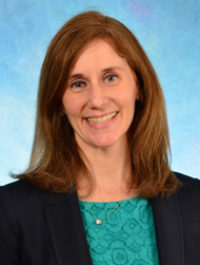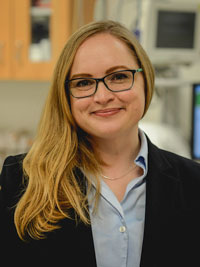EAB Panels from the 2019 AUA Annul Meetingby Keith Baker, MD, PhD
2019 | Issue 2 NewsletterThe Educational Advisory Board (EAB) was delighted with the 2019 AUA/IARS/SOCCA annual meeting held in Montreal, Canada this past May. Numerous features contributed to the success of the meeting. EAB MembershipThe EAB welcomed 4 new members from the AUA membership (Drs. Edward Nemergut, Barbara Jericho, Cynthia Lien and Susan Martinelli) and a new Early-Stage Anesthesiology Scholars (eSAS) representative, Dr. Lara Crock. At the same time, we appreciate the contributions and leadership of Drs. Bob Gaiser, Tony Anderson, May Pian-Smith and Matt McEvoy who have helped lead the EAB and whose terms have ended. We are extremely grateful for their contributions to the EAB over these past years. This summer we extended a call for membership with the goal of adding 4 new members, each to serve a 3-year term. Our current membership, including the Chair and eSAS representative is 50% female. Barbara G. Jericho, MD, DABPM, FASA
Thank you for your service
EAB PanelsThe EAB is striving to bring evidence-based education and up-to-date science about education to the AUA membership. This year we had two outstanding panels that delivered on that goal. The morning panel, “Self‐Regulation and Its Role in Education and Performance”, featured 3 presentations. Daniel Saddawi-Konefka, MD, MBA, Massachusetts General Hospital, presented “Self‐Regulation: What Is It, and How Does It Help Education and Performance?”. The take home messages from the presentation were that unless we exert self-control, all our behaviors are produced by habits (automated responses to situational cues) and impulses. Furthermore, self-control is a limited resource. When self-control is depleted, we are more likely to resort to habit and impulse. To preserve self-control, we can pre-plan alternative responses to situational cues: “If [situation], then I will [thought/action]”. These “If situation-then-action” couplings are known as “implementation intentions”, these strategies have been empirically shown to increase goal-directed behaviors and goal attainment. Sara Goldhaber-Fiebert, MD, Stanford University School of Medicine, presented “The Interaction between Psychological Safety and Self‐Regulation”. The take home messages from the presentation were that psychological safety is a shared belief that the team is safe for interpersonal risk taking. This group-level concept of psychological safety is often the top predictor that differentiates expert teams, correlating with key outcomes across many industries for improved safety, efficiency, employee wellness, customer satisfaction, and profits. While individuals have a limited supply of self-regulation, their group level of psychological safety can help by acting as an enabling ‘step stool’ - e.g. inspiring them to ‘speak up’ in a safe setting, or it can harm – e.g. requiring huge individual effort (self-regulation) to ‘speak up’ in an unsafe setting. To increase psychological safety on your teams, leaders can take simple actions to invite input and genuinely thank people for their input – even if they disagree! A team of (individual) experts does not necessarily form an expert team, and therefore a group of experts is often insufficient for ensuring optimal healthcare for patients. Team-members’ perspectives are like different views of a 3D cone. The anesthesiologist may see a triangle (side view) while the surgeon and nurse may both see similar versions of a circle (top and bottom views). By combining our viewpoints, we can ‘reconstruct’ the real situation which is none of these flat shapes but rather a 3-dimensional cone. Keith E. Littlewood, MD, University of Virginia School of Medicine, presented “Managing and Reducing Cognitive Load for Better Education and Performance”. The take home messages from the presentation were that metacognition is a neglected topic in most of our curricula for medical students and residents. Tomorrow’s physicians need to learn how they learn and better understand how they think. Cognitive load theory includes a model of the cognitive architecture that includes a very limited working memory. This is an important limiting resource in our cognitive function. There are three types of cognitive load. Intrinsic load is innately required by the task for the level of learner, extrinsic load is unnecessary and non-productive, and germane load is that which results in revision, reinforcement, construction and/or automation of schema. Germane load leads to learning. We do not become experts by expanding our working memory, but by creating a single element (schema) from what had been many individual elements that required attention as a novice. Much of cognitive load theory may be intuitive yet parts are surprising. For example, asking a learner for a few likely diagnoses is associated with less cognitive load for the learner than asking for the specific solution. The afternoon panel, “The Science of Effective Feedback”, featured 3 presentations. Rebecca D. Minehart, MD, MSHPEd, Harvard Medical School; Massachusetts General Hospital, presented “Goal‐Orientation: Construing Feedback as Useful”. The take home messages from the presentation were that a learning orientation is the goal of improving one’s performance using the self as the comparison (personal improvement) and a performance orientation is the goal of improving one’s performance compared to others. Holding a learning orientation is associated with deeper learning and less burnout. Leaders can help their teams become more learning oriented if they set the example of responding to setbacks with a learning or mastery orientation where they focus on personal growth and not on comparisons to others. Aranya Bagchi, MD, Harvard Medical School, presented “The Neuroscience of Negative Feedback and Why We Can Become Deaf to It”. The take home messages from the presentation were that we need feedback to improve performance. Effective feedback points out shortcomings that we are often unaware of, and thus is essential to the development of expertise in a field. An awareness of the processes of thought (or metacognition) is important to allow identification of maladaptive thought patterns and enable their correction. However, we have a deep seated “optimism bias” that may have strong biologic underpinnings, that make us less receptive to feedback that disagrees with our (generally positive) view of ourselves. Recent research has provided evidence for the involvement of specific neurotransmitters that influence our optimism bias, as well as the role of discrete areas in our brain that appear to be important in maintaining this bias. To aid in the development of true expertise, both the provider and recipient of feedback need to be aware of these hardwired patterns of thought. Douglas E. Raines, MD, Massachusetts General Hospital, presented “So, Your Paper Was Rejected: A Practical Example of Managing Negative Feedback”. The take home messages from the presentation were that rejection is common with high impact journals which have rejection rates as high as 90%. The key is not to be discouraged by rejection and to let the negative emotions subside after reading the rejection letter but before responding to the reviewer’s comments. He recommends reading the review letter to determine whether you can adequately respond to the reviewer’s comments. If so, be courteous and respond to all the comments. If not, he also recommends that authors use the reviewer’s comments to improve their manuscripts and resubmit to another journal comforted by the knowledge that many initially rejected manuscripts are ultimately published. Author |










